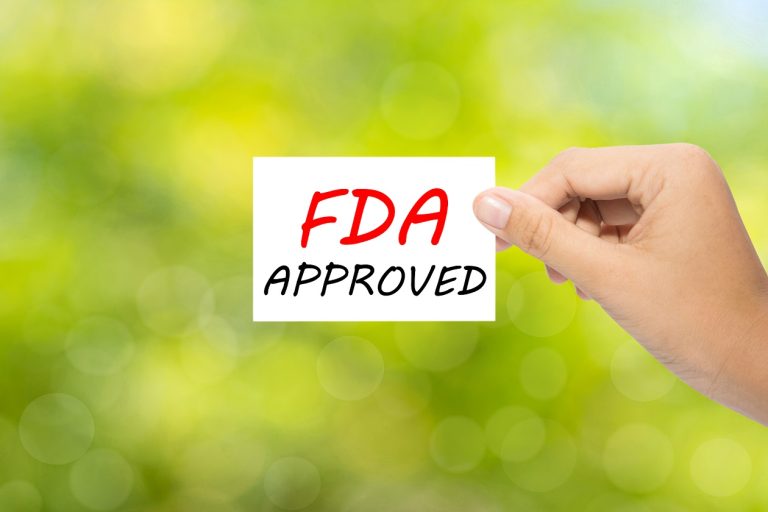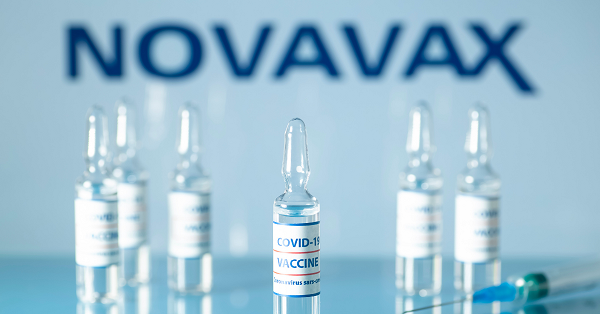Story Highlights
- The Food and Drug Administration (FDA) increasingly applies “fast-track” licensing status to experimental drugs and vaccines in the research pipeline.
- The accelerated pharmaceutical product licensing approval system was originally created to give patients suffering with serious diseases or disorders quick access to important new drugs where no—or inadequate—treatment options were otherwise available.
- The FDA’s fast-track licensing system is now a fee-generating process for the FDA, with priority review vouchers for experimental pharmaceutical products that can be bought and sold by drug companies with little regard to the original intent.
With its recent approval of fast track status for ImmusantT’s experimental vaccine Nexvax2, which has been designed to protect celiac patients against the adverse effects of gluten exposure,1 the U.S. Food and Drug Administration (FDA) is off to another big year in the accelerated licensing approval process for new drug therapies and biologics (vaccines).
What Does “Fast Tracked” Mean?
The FDA defines drug-approval fast tracking as “a process designed to facilitate the development, and expedite the review of drugs to treat serious conditions and fill an unmet medical need. The stated purpose is to get important new drugs to patients earlier.”2 Fast tracking was originally created by Congress in legislation designed to address “a broad range of serious conditions,” although that term is now applied more liberally than was initially intended.
There are four categories to the accelerated pharmaceutical product review process as defined by the FDA: Designation as a “Breakthrough Therapy,” Fast-Track, Accelerated Approval and Priority Review.
Breakthrough Therapy
To be designated as a breakthrough therapy, an experimental treatment must hold the promise of “substantial improvement over available therapy on a clinically significant endpoint(s)” for a disease or condition subjectively defined as serious, or for a so-called unmet need.3
The Fast-Track Premise
The “serious condition” element can refer to any condition determined to affect a person’s everyday life, from cancer and heart disease to depression, diabetes or erectile dysfunction, while “unmet medical need” refers either to a new treatment being developed where none existed before or a new therapy with the potential to provide a markedly better treatment option than was previously available.
A drug company developing a new therapy that is awarded fast-track status may be entitled to more frequent meetings with and written communications from the FDA to keep on top of drug development plans, establish data requirements and fine tune details of study criteria. The fast-tracked therapy may also be granted “Rolling Review,” meaning the pharmaceutical company is allowed to submit pieces of its Biologic License Application (BLA) or New Drug Application (NDA) for review by FDA as they become ready, instead of having to wait until the entire application is ready for review as a whole, as is usually the case.4
Finally, a fast-tracked pharmaceutical product may be considered eligible for Accelerated Approval and Priority Review, two other FDA designations designed to speed the market availability of treatments considered important for one of the variety of reasons mentioned.
Accelerated Approval
The development of new therapies often requires years of clinical study to determine whether the drug is as effective as predicted by the drug company seeking a license. In the case of serious conditions such as cancer, the FDA may use a “surrogate endpoint” to predict long-term effectiveness, allowing federal officials to grant approval and make the treatment available to patients much earlier in the process. An example of a surrogate endpoint is tumor shrinkage, which may be expected to predict longer life for cancer patients. Even with accelerated approval, however, the drug company is still expected to complete studies aimed at proving the surrogate endpoints did (or did not) actually provide the expected benefit.5
Priority Review
The final piece of the fast-track system is the Priority Review, which dates back to the Prescription Drug User Act (PDUFA) passed by Congress in 1992, which stipulated specific goals for drug review and established two types of review: Standard (which typically runs about ten months) and Priority (which is usually truncated to closer to six months). The FDA states that even if priority review is granted, the scientific/medical standards and the quality of evidence required remain the same.
Flaws in the Fast-Track System
The impetus behind the accelerated approval process may be a noble one—to get needed medicines to patients as soon as possible—but the system has some serious drawbacks. Several fast-tracked drugs have been recalled after unforeseen safety issues surfaced after market.
Among many others, some of the more widely publicized recalls of fast-tracked therapies include:6 7 8
- Bextra (valdecoxib): Pfizer’s painkiller can cause fatal heart and skin problems.
- Vioxx (rofecoxib): Merck’s anti-arthritis (nonsteroidal anti-inflammatory) drug was found to increase the risk of heart attack and stroke.
- Rezulin (troglitazone): Parke-Davis/Warner-Lambert’s drug was supposed to offer new hope to patients with type 2 diabetes but was recalled in 2000 for its toxic effects on the liver.
- Seldane (terfenadine): Hoechst Marion Roussel (Aventis)’s antihistamine was recalled when it was shown to cause abnormal cardiac rhythms.
- Posicor (mibefradil): Roche’s drug, used to treat hypertension and heart issues, was recalled after exhibiting toxic interactions with a known 26 other drugs.
History Proves the Need for Rigorous Preclinical Review
Early examples of the importance of pre-release safety studies include the “Elixir of Sulfanilamide,” a powerful and effective anti-infective agent that also happened to kill 107 people between September and October of 1937, prompting introduction of the Federal Food, Drug, and Cosmetic Act of 1938. The new law required drug manufacturers to provide evidence of safety before a new product was deemed safe for the marketplace. Unfortunately, at that time, guidelines were lacking and oversight minimal.
The most infamous example of the critical role of preclinical safety data is the thalidomide tragedy that occurred, primarily in Europe, in the late 1950s and early 60s. The sedative thalidomide was commonly given to pregnant women in Canada and Europe as an off-label treatment for morning sickness but resulted in thousands of infants born with missing or severely deformed limbs and untold others who died in utero. A newly hired FDA reviewer, Frances Oldham Kelsey, refused to bow to pressure from the drug’s manufacturer, rejected the inadequate safety data provided by the drug company, and ultimately turned down the application for thalidomide’s distribution in the U.S., for the most part sparing this country’s babies the fate of so many in Canada, Great Britain and West Germany. The thalidomide debacle led Congress to pass the Kefauver-Harris Amendment, requiring better oversight for clinical studies and more rigorous proof of a drug’s safety and effectiveness before approval.9
The Swing of the Pendulum
The cautious era of careful review and slow approval rates following such consequences as the sulfanilamide and thalidomide disasters took another turn in 1988 with public demonstrations aimed at forcing the FDA to speed up the release of experimental drugs to treat Human Immunodeficiency Virus (HIV) and Acquired Immunodeficiency Syndrome (AIDS). The FDA reacted to this and other demonstrations by quickly approving more than a dozen new therapies for HIV/AIDS, effectively changing the face of the disease.10
Coupled with a number of similar consumer demonstrations and demands for access to experimental therapies, pharmaceutical companies also began threatening to move their research, development and clinical studies overseas, where the approval process was easier. In response, Congress approved the aforementioned Prescription Drug User Fee Act (PDUFA) in 1992, exchanging generally faster approval times for substantial “user fees” to be paid by the drug companies to provide more funding for the FDA’s budget.
Fees Compromise FDA Integrity
Today, these hefty user fees paid for by pharmaceutical corporations seeking fast track licenses make up more than half of the FDA’s annual budget,11 playing “an important role in expediting the drug and vaccine licensing approval process.”12 For example, the 2019 application fee for a new drug requiring clinical data will be $2,588,478, up from $ 2,421,495 in 2018; the application fee without the clinical data element will be $1,294,239, up from $ 1,210,748 in 2018; and the program fee itself will be $309,915, up from $ 304,162 in 2018.13
Murky Financial Waters
Another troubling feature of the “pay for play” fast-track licensing process, detailed by TVR Staff here, is that the law allows pharmaceutical companies to sell their purchased priority review vouchers (PRVs). The PRVs that were originally granted by the FDA to support development of a treatment deemed important for “rare or neglected diseases” can be sold by a drug company to another drug company for a hefty profit to assist in the development of a completely different, unrelated condition. “When sold, the PRVs designed to help small companies fund their development of non-profitable disease treatments can give extreme advantages to multinational corporations developing and selling other high priced drugs and vaccines,” allowing them several months of additional sales time compared to standard review and approval.14
Reliance on funding from pharmaceutical companies to speed up the FDA’s pharmaceutical product licensing process calls into question the presumed lack of prejudice or bias on the part of FDA officials literally being paid by the industry they are legally responsible for regulating. The question remains: How can this government entity, held responsible for evaluating and vetting the safety and clinical effectiveness of a new drug or vaccine, maintain neutrality when the drug companies have effectively become their clients?
References:
2 FDA. Fast Track. Food and Drug Administration Jan. 4, 2018.
3 FDA. Breakthrough Therapy. Food and Drug Administration Jan. 4, 2018.
4 See Footnote 2.
5 FDA. Accelerated Approval. Food and Drug Administration Jan. 4, 2018.
6 Peters S. 18 of the Worst Drug Recalls in History. 24/7 Wall Street Dec. 26, 2018.
7 Henderson D, Rowland C. Once ‘Too Slow,’ FDA Approvals Called ‘Too Fast’. The Boston Globe April 10, 2005.
8 Rezulin Recall: Fast-Moving FDA Meets a New Speed Bump. WebMD Mar. 22, 2000.
9 McNeill L. The Woman Who Stood Between America and a Generation of ‘Thalidomide Babies’. Smithsonian.com May 8, 2017.
10 See Footnote 7.
11 TVR Staff. Drug Companies Pay FDA and NIH Pays Universities to Fast Track and Market Vaccines. The Vaccine Reaction Sept. 28, 2018.
12 FDA. Prescription Drug User Fee Amendments. U.S. Department of Health and Human Services Dec. 14, 2018.
13 Ibid.
14 See Footnote 12.













4 Responses
So now celiacs can eat as much bread as they like. This FDA approved vaccine is literally a sick joke. Whatever next!
The FDA usually doesn’t recall a drug until after the maker has made a substantial profit so for the maker, fast track is fine. They are less concerned about harmful results and more concerned with recouping investment with a healthy profit.
On a separate note, there’s a vaccine for celiac?? I thought vaccines were for infectious diseases. How do you make a vaccine for an allergic reaction?
OMG So many celiacs will run to take this thinking it has been fully vetted and they will be guinea pigs that will suffer the post marketing nightmares.
Thalidomide was in USA from 1956 to 1962 as samples millions of pills was given out 6 years in the USA she did not stop this drug until it was to late the damage was already done in the USA